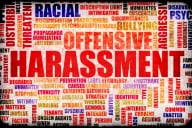You have /5 articles left.
Sign up for a free account or log in.
It has been an extremely demanding six months. COVID-19 has wreaked havoc in everyone’s personal and work lives, which are now often defined by a sense of uncertainty, confusion and helplessness. Despite the sacrifices we have made in keeping the doors of many businesses closed and moving most institutions online, and the lives lost and upended through lockdowns and job losses, the disease rages on with no end in sight.
It is hard not to feel frustration over how we, as a society with so many advantages, could have managed this virus so poorly. People are anxious and frightened about the future. A recent Kaiser Family Foundation poll shows that 53 percent of Americans believe the pandemic is having an impact on their mental health. For African Americans, that number climbs to 68 percent, reflecting the disproportionate toll the pandemic has taken on Black lives and livelihoods.
We are seeing this play out on college campuses as well. Faculty, staff and students are tired and concerned. Whether to open campuses this fall, and how to do so safely, has consumed everyone’s energy during months of uncertainty, fast-paced planning and constant adaptation to evolving circumstances. Many college and university leaders planned over the summer to resume in-person instruction in the fall, only to find themselves having to send students home to contain outbreaks. The uncertainty has caused considerable frustration among students and families, faculty, and staff. On top of this, most institutions are bracing for budget reductions of an unprecedented magnitude.
In the midst of the pandemic, our students are also asking us about how we will address structural racism on our campuses and in our broader society. Our responses must show an authentic commitment to listening to their voices and a willingness to commit our resources, time and energy to supporting our students, faculty and staff of color and living up to our values.
Managing such issues in a constant crisis mode has been challenging for all us. COVID fatigue is real, and it is easy to be discouraged when, after all the hard work, things turn out not as we had expected. Yet we believe we have reason for hope if we are intentional about helping our communities to move forward with a spirit of empowerment.
Why We Need to Keep Hope Alive
It is our fundamental belief that people choose to dedicate themselves to work in higher education because they want to improve lives. More than ever, higher education is needed to educate our communities and build a better society. We need to constantly remind each other why we do what we do -- and concentrate our collective vision on our institutional mission, values and goals.
Remembering the nobility of our work as educators will help us persist and grow despite the challenges before us. While the urgent nature of pandemic-related response work may temporarily blur our focus on aspirational and strategic goals, our institutional missions and shared values remain the foundation of our work together, both today and into the future.
Our hope comes from understanding the difference we are making in the lives of our students and how our graduates of all identities and backgrounds, in turn, are making a positive difference in our society through their work, research and public advocacy.
How to Keep Hope Alive
Keeping hope alive does not just happen. It requires deliberate effort and commitment. We need to understand and reference the role of history in making sense of where we are today and how we got here. History tells us that we will get through this pandemic because we have overcome other crises in the past. In looking back at just the past 50 years, we realize we’ve made progress as a nation, while recognizing that we still have so much more to do.
For example, the 1960s were an empowering yet tumultuous time. The efforts of civil rights activists and countless protesters brought about legislation to end segregation in public places, Black voter suppression and discriminatory employment and housing practices, as well as to expand access to higher education. A grandmother of one of the authors, Freeman, who was born in 1890 as a child of slaves, failed the Alabama literacy test twice before finally passing it in her 70s and being allowed to vote. With a sixth-grade education, she nevertheless knew the power of reading and was determined to overcome that unfair obstacle. Then, in 1965, the Voting Rights Act banned poll taxes, literacy tests and other measures that effectively prevented African Americans from voting.
We need to remind ourselves that social movements, protest and activism are the building blocks of democracy. Today, people of all backgrounds are speaking out to say Black lives matter, and our country is recognizing that this is a movement whose time has come. That gives us hope specifically because it reminds us of how past social protests and activism have made a difference, leading to legislation that has given people the access to their voting rights.
Another way we can keep hope alive is to use this time to pursue the imperative of discovering and building an inclusive team of emerging leaders within our institutions. Despite the overwhelming nature of dealing with the current crisis, and the fact that no one knows exactly how higher education will evolve, there is at least one certainty. We must answer the questions: Who will be prepared to provide the necessary leadership, and how will leadership in higher education be different in the future compared to the way it is today?
We do not have all the answers, but we believe that we must work to empower our most innovative colleagues from all backgrounds to consider and move into leadership roles. This principle of inclusive leadership is essential because the success of an institution cannot rest on the accomplishments of one person or one generation of leaders. We must define leadership in terms of shared governance, listen with a genuine intent to understand others’ experiences and follow through on our commitment to inclusive excellence.
We won’t solve all our problems if we listen more. But we will build trust within our communities that will serve as a springboard from which to move our institutions to new levels in the post-COVID era.
This is a time to focus on the role of shared governance in developing institutional leaders among the faculty and staff. For instance, two of the authors, Philip and Sarah, previously served as presidents of the Faculty Senate of the University of Maryland, Baltimore County. While we have much more to do, we are also heartened by the success we have had in supporting people from diverse backgrounds as they move into leadership positions, partnering with programs such as the American Council on Education Fellows Program. Nurturing people in our institutions to develop as leaders will continue to generate long-lasting dividends well after the pandemic has ended.
We recommend, as a first step, that colleges and universities focus on continuing to build trust within their communities by showing that active listening leads to concrete actions that address student, faculty and staff concerns. It helps in many cases to be as flexible as possible in implementing policies, to find opportunities to highlight examples of success and to thank people as often as possible.
In difficult times, we come to know who we are. We are seeing the best of humanity as we hear about our students’ resilience in the face of great challenges, and as we see our faculty and staff more committed to our students than ever. This gives us hope.








